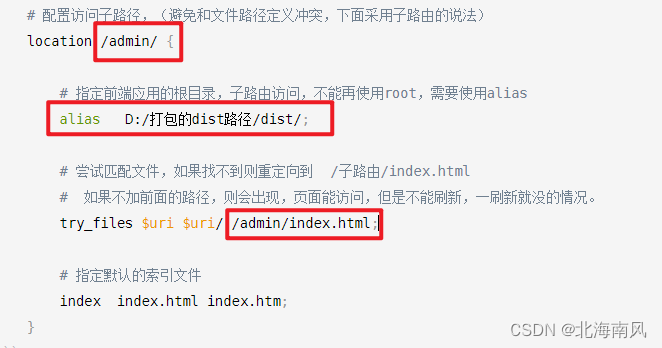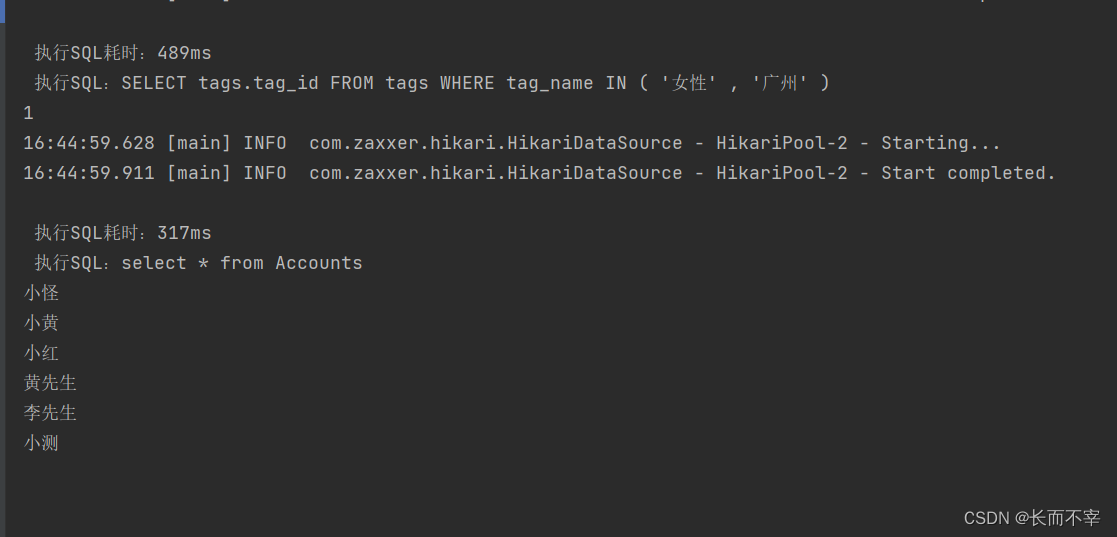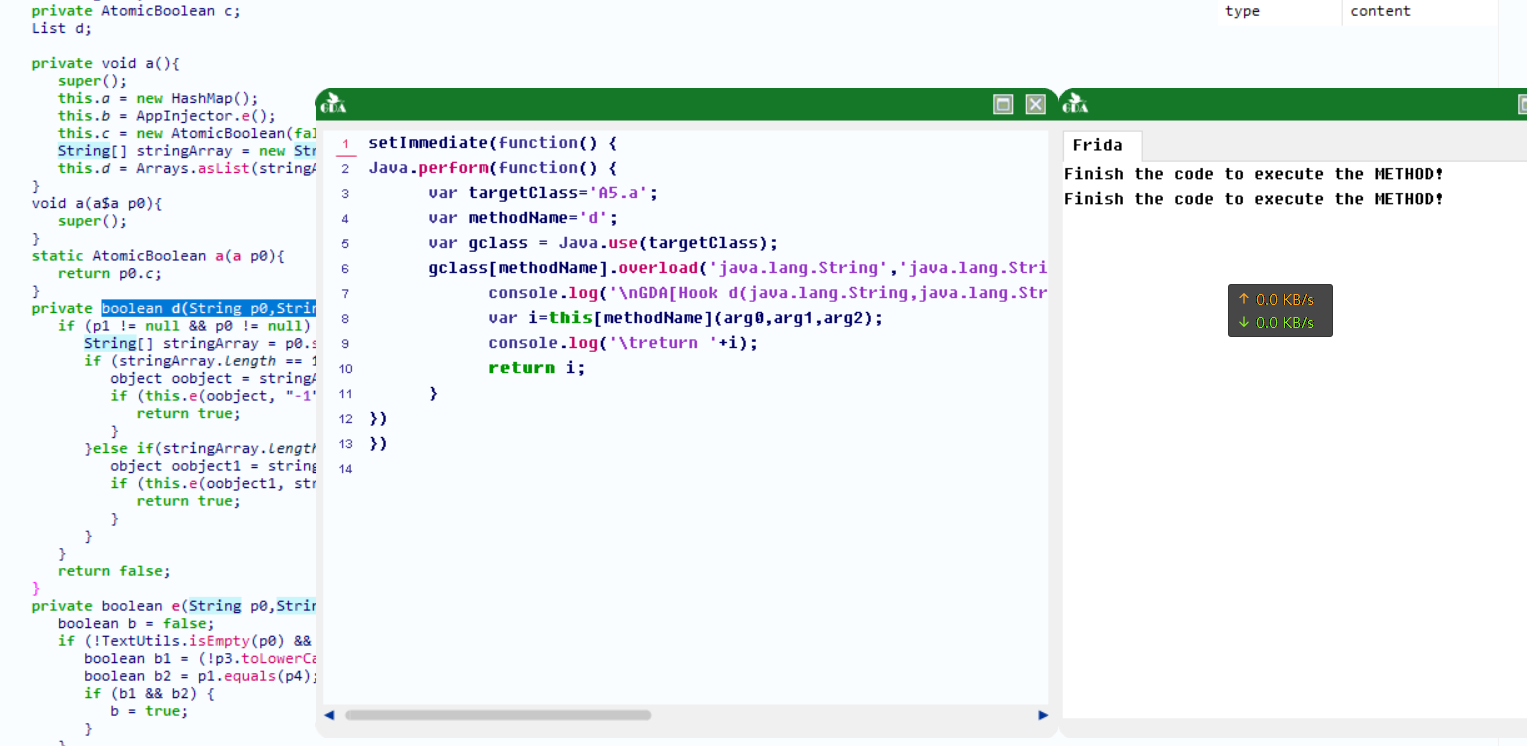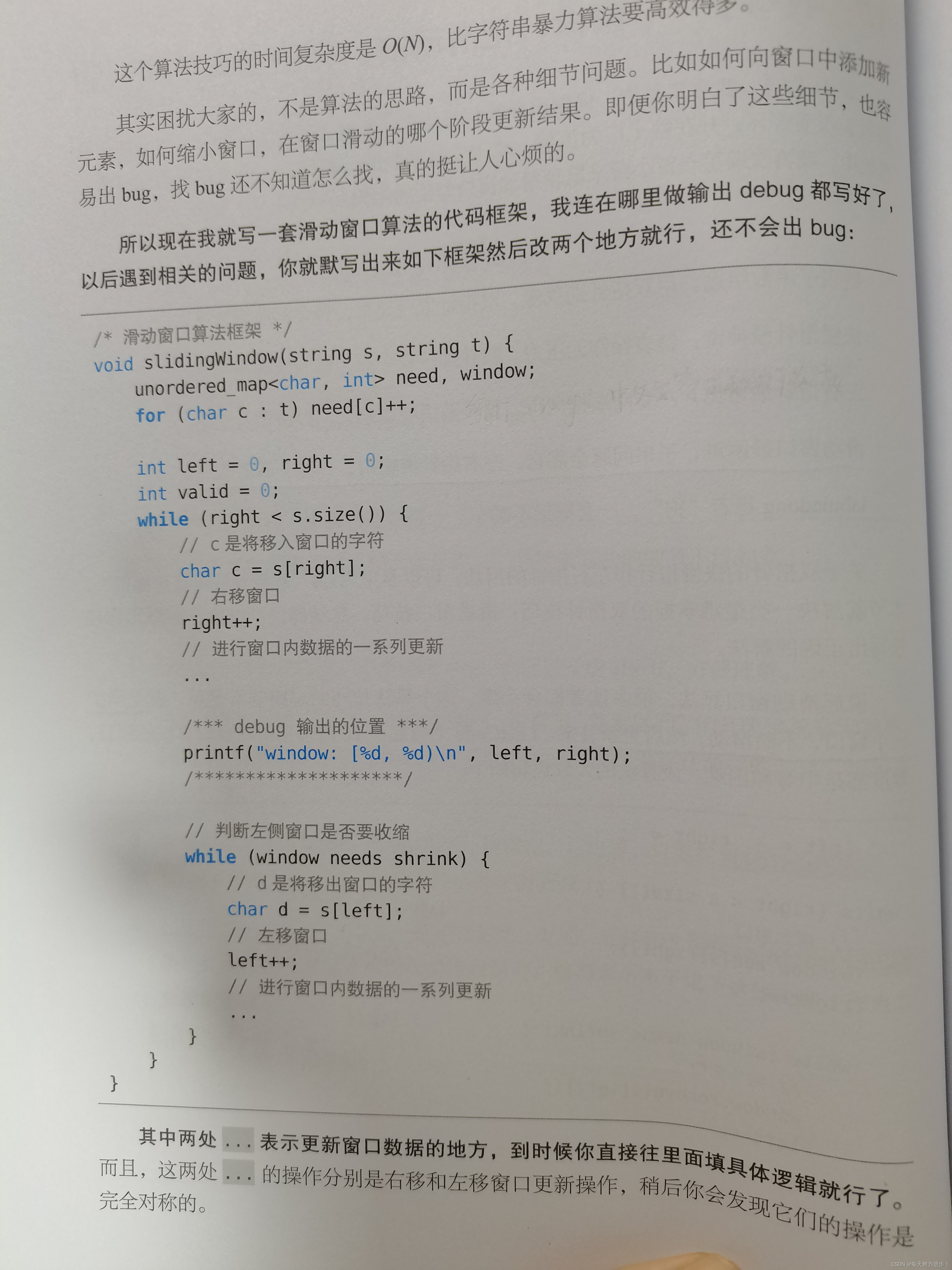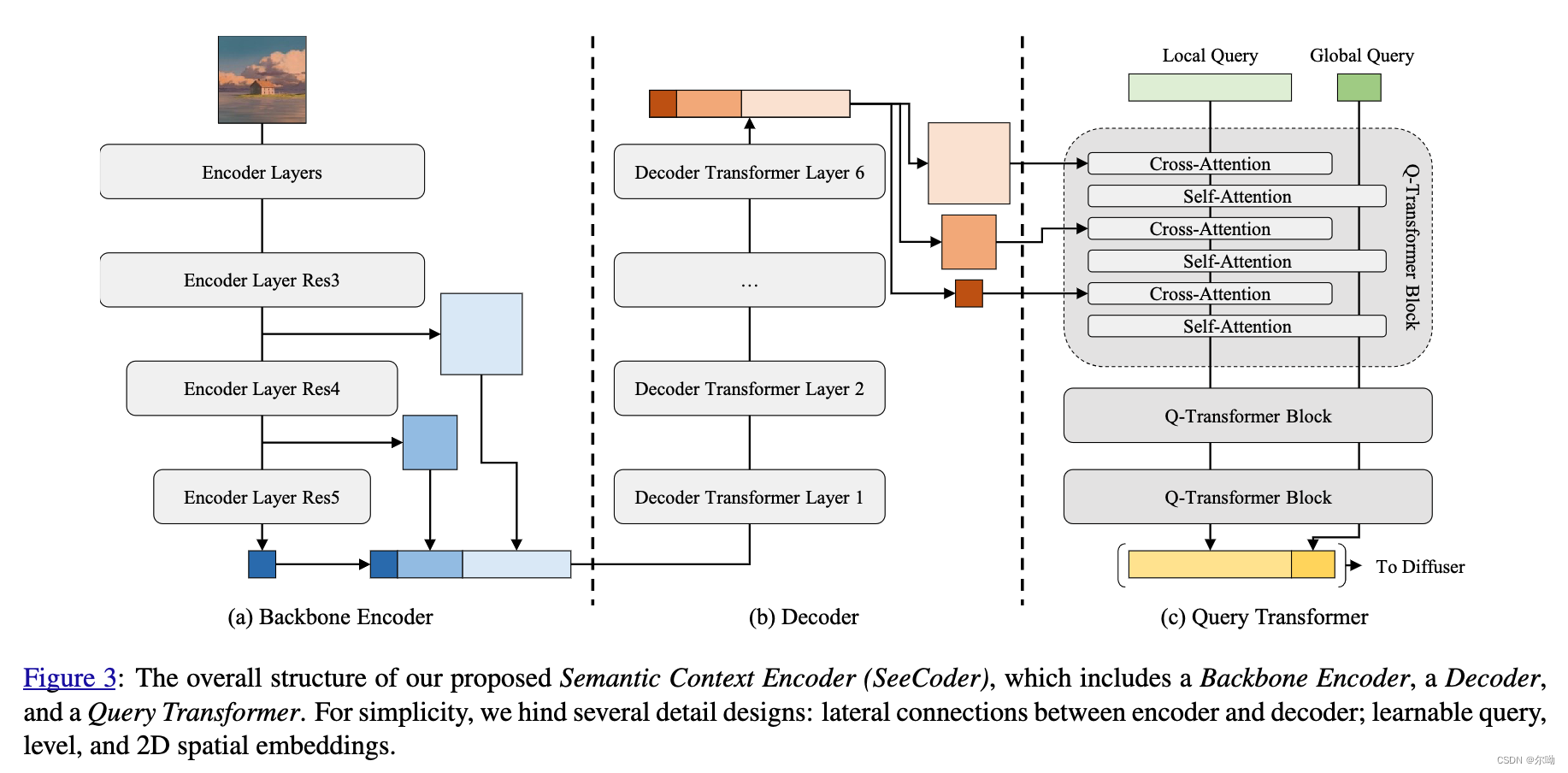1、语义分割
图像语义分割(semantic segmentation)是图像处理和机器视觉技术中关于图像理解的重要一环,AI领域中一个重要分支,常被应用于人脸识别、物体检测、医学影像、卫星图像分析、自动驾驶感知等领域。
语义分割的目的是对图像中每个像素点进行分类。 要识别出整张图片的每个部分,就意味着要精确到像素点,所以语义分割实际上是对图像中每一个像素点进行分类,确定每个点的类别(如属于背景、人、汽车、马等),从而进行区域划分。
与普通的分类任务只输出某个类别不同,语义分割任务输出与输入大小相同的图像,输出图像的每个像素对应了输入图像每个像素的类别。语义在图像领域指的是图像的内容,对图片意思的理解,下图是一些语义分割的实例:

2、全卷积网络
全卷积网络(Fully Convolutional Networks,FCN)是UC Berkeley的Jonathan Long等人于2015年在Fully Convolutional Networks for Semantic Segmentation[1]一文中提出的用于图像语义分割的一种框架。
核心思想:
1.不含全连接层(fc)的全卷积(fully conv)网络。可适应任意尺寸输入。
2.增大数据尺寸的反卷积(deconv)层。能够输出精细的结果。
3.结合不同深度层结果的跳级(skip)结构。同时确保鲁棒性和精确性。
FCN是首个端到端(end to end)进行像素级(pixel level)预测的全卷积网络。

3、模型简介
FCN主要用于图像分割领域,是一种端到端的分割方法,是深度学习应用在图像语义分割的开山之作。通过进行像素级的预测直接得出与原图大小相等的label map。因FCN丢弃全连接层替换为全卷积层,网络所有层均为卷积层,故称为全卷积网络。
全卷积神经网络主要使用以下三种技术:
3.1 卷积化(Convolutional)
使用VGG-16作为FCN的backbone。VGG-16的输入为224*224的RGB图像,输出为1000个预测值。VGG-16只能接受固定大小的输入,丢弃了空间坐标,产生非空间输出。VGG-16中共有三个全连接层,全连接层也可视为带有覆盖整个区域的卷积。将全连接层转换为卷积层能使网络输出由一维非空间输出变为二维矩阵,利用输出能生成输入图片映射的heatmap。

3*3 conv, 64:使用64个size是3*3,stride步长为1,padding填充为1的卷积核。
池化:最大池化,使用size是2*2,stride步长为2,padding填充为0进行池化。
第6层和第7层分别是一个长度为4096的一维向量,第8层是长度为1000的一维向量,分别对应1000个类别的概率。FCN将这3层表示为卷积层,卷积核的大小(通道数,宽,高)分别为(4096,7,7)、(4096,1,1)、(1000,1,1)。所有的层都是卷积层,故称为全卷积网络。
3.2 上采样(Upsample)
在卷积过程的卷积操作和池化操作会使得特征图的尺寸变小,为得到原图的大小的稠密图像预测,需要对得到的特征图进行上采样操作。使用双线性插值的参数来初始化上采样逆卷积的参数,后通过反向传播来学习非线性上采样。在网络中执行上采样,以通过像素损失的反向传播进行端到端的学习。

3.3 跳跃结构(Skip Layer)
利用上采样技巧对最后一层的特征图进行上采样得到原图大小的分割是步长为32像素的预测,称之为FCN-32s。由于最后一层的特征图太小,损失过多细节,采用skips结构将更具有全局信息的最后一层预测和更浅层的预测结合,使预测结果获取更多的局部细节。将底层(stride 32)的预测(FCN-32s)进行2倍的上采样得到原尺寸的图像,并与从pool4层(stride 16)进行的预测融合起来(相加),这一部分的网络被称为FCN-16s。随后将这一部分的预测再进行一次2倍的上采样并与从pool3层得到的预测融合起来,这一部分的网络被称为FCN-8s。 Skips结构将深层的全局信息与浅层的局部信息相结合。

4、数据处理
由于PASCAL VOC 2012数据集中图像的分辨率大多不一致,无法放在一个tensor中,故输入前需做标准化处理。
4.2 加载数据集
from download import download
url = "https://mindspore-website.obs.cn-north-4.myhuaweicloud.com/notebook/datasets/dataset_fcn8s.tar"
download(url, "./dataset", kind="tar", replace=True)4.2 数据预处理
import numpy as np
import cv2
import mindspore.dataset as ds
class SegDataset:
def __init__(self,
image_mean, #图像的均值,用于图像标准化。通常是一个列表或数组,包含每个通道的均值值。
image_std,#图像的标准差,也用于图像标准化。通常是一个列表或数组,包含每个通道的标准差值。
data_file='',#数据文件的路径。这个参数默认是一个空字符串,表示可能的默认值或未提供文件路径。
batch_size=32,#批处理大小,表示一次训练中使用的样本数量。32是一个常见的默认值。
crop_size=512,#裁剪大小,表示图像在训练或测试时裁剪的尺寸。512通常用于高分辨率图像。
max_scale=2.0,#最大缩放比例,用于数据增强,通过随机缩放图像来增加模型的鲁棒性。
min_scale=0.5,#最小缩放比例,同样用于数据增强。
ignore_label=255,#忽略标签,通常用于语义分割任务,表示某些像素点不参与训练的标签值。
num_classes=21,#类别数量,表示数据集中不同类别的数量。21个类别可能用于某个特定的数据集,比如Pascal VOC。
num_readers=2,#读取器数量,表示用于读取数据文件的并行读取器数量,可以加快数据加载速度。
num_parallel_calls=4):#并行调用数量,用于数据预处理的并行调用次数,可以加快数据预处理过程。
self.data_file = data_file
self.batch_size = batch_size
self.crop_size = crop_size
self.image_mean = np.array(image_mean, dtype=np.float32)
self.image_std = np.array(image_std, dtype=np.float32)
self.max_scale = max_scale
self.min_scale = min_scale
self.ignore_label = ignore_label
self.num_classes = num_classes
self.num_readers = num_readers
self.num_parallel_calls = num_parallel_calls
max_scale > min_scale
def preprocess_dataset(self, image, label):
# np.frombuffer(image, dtype=np.uint8):将原始字节数据转换为NumPy数组,以便OpenCV可以处理。
# cv2.imdecode(..., cv2.IMREAD_COLOR):使用OpenCV解码这个NumPy数组,并将其转换为一个图像矩阵,以便后续的图像处理操作。
image_out = cv2.imdecode(np.frombuffer(image, dtype=np.uint8), cv2.IMREAD_COLOR)
label_out = cv2.imdecode(np.frombuffer(label, dtype=np.uint8), cv2.IMREAD_GRAYSCALE)
#生成一个在self.min_scale和self.max_scale之间的随机浮点数。
sc = np.random.uniform(self.min_scale, self.max_scale)
new_h, new_w = int(sc * image_out.shape[0]), int(sc * image_out.shape[1])
#将图像 image_out 的大小调整为 new_w 宽和 new_h 高,并使用(nterpolation=cv2.INTER_CUBIC)双三次插值方法进行插值。
image_out = cv2.resize(image_out, (new_w, new_h), interpolation=cv2.INTER_CUBIC)
label_out = cv2.resize(label_out, (new_w, new_h), interpolation=cv2.INTER_NEAREST)
image_out = (image_out - self.image_mean) / self.image_std
out_h, out_w = max(new_h, self.crop_size), max(new_w, self.crop_size)
pad_h, pad_w = out_h - new_h, out_w - new_w
if pad_h > 0 or pad_w > 0:
# cv2.copyMakeBorder:这是OpenCV中的一个函数,用于为图像添加边框。image_out:这是要添加边框的输入图像矩阵。
# 0, pad_h, 0, pad_w:这些参数指定了边框的大小:
image_out = cv2.copyMakeBorder(image_out, 0, pad_h, 0, pad_w, cv2.BORDER_CONSTANT, value=0)
label_out = cv2.copyMakeBorder(label_out, 0, pad_h, 0, pad_w, cv2.BORDER_CONSTANT, value=self.ignore_label)
offset_h = np.random.randint(0, out_h - self.crop_size + 1)
offset_w = np.random.randint(0, out_w - self.crop_size + 1)
image_out = image_out[offset_h: offset_h + self.crop_size, offset_w: offset_w + self.crop_size, :]
label_out = label_out[offset_h: offset_h + self.crop_size, offset_w: offset_w+self.crop_size]
if np.random.uniform(0.0, 1.0) > 0.5:
image_out = image_out[:, ::-1, :]
label_out = label_out[:, ::-1]
image_out = image_out.transpose((2, 0, 1))
image_out = image_out.copy()
label_out = label_out.copy()
label_out = label_out.astype("int32")
return image_out, label_out
def get_dataset(self):
ds.config.set_numa_enable(True)
dataset = ds.MindDataset(self.data_file, columns_list=["data", "label"],
shuffle=True, num_parallel_workers=self.num_readers)
transforms_list = self.preprocess_dataset
dataset = dataset.map(operations=transforms_list, input_columns=["data", "label"],
output_columns=["data", "label"],
num_parallel_workers=self.num_parallel_calls)
dataset = dataset.shuffle(buffer_size=self.batch_size * 10)
dataset = dataset.batch(self.batch_size, drop_remainder=True)
return dataset
# 定义创建数据集的参数
IMAGE_MEAN = [103.53, 116.28, 123.675]
IMAGE_STD = [57.375, 57.120, 58.395]
DATA_FILE = "dataset/dataset_fcn8s/mindname.mindrecord"
# 定义模型训练参数
train_batch_size = 4
crop_size = 512
min_scale = 0.5
max_scale = 2.0
ignore_label = 255
num_classes = 21
# 实例化Dataset
dataset = SegDataset(image_mean=IMAGE_MEAN,
image_std=IMAGE_STD,
data_file=DATA_FILE,
batch_size=train_batch_size,
crop_size=crop_size,
max_scale=max_scale,
min_scale=min_scale,
ignore_label=ignore_label,
num_classes=num_classes,
num_readers=2,
num_parallel_calls=4)
dataset = dataset.get_dataset()4.3 训练集可视化
import numpy as np
import matplotlib.pyplot as plt
plt.figure(figsize=(16, 8))
# 对训练集中的数据进行展示
for i in range(1, 9):
plt.subplot(2, 4, i)
show_data = next(dataset.create_dict_iterator())
show_images = show_data["data"].asnumpy()
show_images = np.clip(show_images, 0, 1)
# 将图片转换HWC格式后进行展示
plt.imshow(show_images[0].transpose(1, 2, 0))
plt.axis("off")
plt.subplots_adjust(wspace=0.05, hspace=0)
plt.show()【运行结果】

5、网络构建
FCN网络的流程如下图所示:
- 输入图像image,经过pool1池化后,尺寸变为原始尺寸的1/2。
- 经过pool2池化,尺寸变为原始尺寸的1/4。
- 接着经过pool3、pool4、pool5池化,大小分别变为原始尺寸的1/8、1/16、1/32。
- 经过conv6-7卷积,输出的尺寸依然是原图的1/32。
- FCN-32s是最后使用反卷积,使得输出图像大小与输入图像相同。
- FCN-16s是将conv7的输出进行反卷积,使其尺寸扩大两倍至原图的1/16,并将其与pool4输出的特征图进行融合,后通过反卷积扩大到原始尺寸。
- FCN-8s是将conv7的输出进行反卷积扩大4倍,将pool4输出的特征图反卷积扩大2倍,并将pool3输出特征图拿出,三者融合后通反卷积扩大到原始尺寸。

5.1 构建代码
import mindspore.nn as nn
class FCN8s(nn.Cell):
def __init__(self, n_class):
super().__init__()
self.n_class = n_class
self.conv1 = nn.SequentialCell(
nn.Conv2d(in_channels=3, out_channels=64,
kernel_size=3, weight_init='xavier_uniform'),
nn.BatchNorm2d(64),
nn.ReLU(),
nn.Conv2d(in_channels=64, out_channels=64,
kernel_size=3, weight_init='xavier_uniform'),
nn.BatchNorm2d(64),
nn.ReLU()
)
self.pool1 = nn.MaxPool2d(kernel_size=2, stride=2)
self.conv2 = nn.SequentialCell(
nn.Conv2d(in_channels=64, out_channels=128,
kernel_size=3, weight_init='xavier_uniform'),
nn.BatchNorm2d(128),
nn.ReLU(),
nn.Conv2d(in_channels=128, out_channels=128,
kernel_size=3, weight_init='xavier_uniform'),
nn.BatchNorm2d(128),
nn.ReLU()
)
self.pool2 = nn.MaxPool2d(kernel_size=2, stride=2)
self.conv3 = nn.SequentialCell(
nn.Conv2d(in_channels=128, out_channels=256,
kernel_size=3, weight_init='xavier_uniform'),
nn.BatchNorm2d(256),
nn.ReLU(),
nn.Conv2d(in_channels=256, out_channels=256,
kernel_size=3, weight_init='xavier_uniform'),
nn.BatchNorm2d(256),
nn.ReLU(),
nn.Conv2d(in_channels=256, out_channels=256,
kernel_size=3, weight_init='xavier_uniform'),
nn.BatchNorm2d(256),
nn.ReLU()
)
self.pool3 = nn.MaxPool2d(kernel_size=2, stride=2)
self.conv4 = nn.SequentialCell(
nn.Conv2d(in_channels=256, out_channels=512,
kernel_size=3, weight_init='xavier_uniform'),
nn.BatchNorm2d(512),
nn.ReLU(),
nn.Conv2d(in_channels=512, out_channels=512,
kernel_size=3, weight_init='xavier_uniform'),
nn.BatchNorm2d(512),
nn.ReLU(),
nn.Conv2d(in_channels=512, out_channels=512,
kernel_size=3, weight_init='xavier_uniform'),
nn.BatchNorm2d(512),
nn.ReLU()
)
self.pool4 = nn.MaxPool2d(kernel_size=2, stride=2)
self.conv5 = nn.SequentialCell(
nn.Conv2d(in_channels=512, out_channels=512,
kernel_size=3, weight_init='xavier_uniform'),
nn.BatchNorm2d(512),
nn.ReLU(),
nn.Conv2d(in_channels=512, out_channels=512,
kernel_size=3, weight_init='xavier_uniform'),
nn.BatchNorm2d(512),
nn.ReLU(),
nn.Conv2d(in_channels=512, out_channels=512,
kernel_size=3, weight_init='xavier_uniform'),
nn.BatchNorm2d(512),
nn.ReLU()
)
self.pool5 = nn.MaxPool2d(kernel_size=2, stride=2)
self.conv6 = nn.SequentialCell(
nn.Conv2d(in_channels=512, out_channels=4096,
kernel_size=7, weight_init='xavier_uniform'),
nn.BatchNorm2d(4096),
nn.ReLU(),
)
self.conv7 = nn.SequentialCell(
nn.Conv2d(in_channels=4096, out_channels=4096,
kernel_size=1, weight_init='xavier_uniform'),
nn.BatchNorm2d(4096),
nn.ReLU(),
)
self.score_fr = nn.Conv2d(in_channels=4096, out_channels=self.n_class,
kernel_size=1, weight_init='xavier_uniform')
self.upscore2 = nn.Conv2dTranspose(in_channels=self.n_class, out_channels=self.n_class,
kernel_size=4, stride=2, weight_init='xavier_uniform')
self.score_pool4 = nn.Conv2d(in_channels=512, out_channels=self.n_class,
kernel_size=1, weight_init='xavier_uniform')
self.upscore_pool4 = nn.Conv2dTranspose(in_channels=self.n_class, out_channels=self.n_class,
kernel_size=4, stride=2, weight_init='xavier_uniform')
self.score_pool3 = nn.Conv2d(in_channels=256, out_channels=self.n_class,
kernel_size=1, weight_init='xavier_uniform')
self.upscore8 = nn.Conv2dTranspose(in_channels=self.n_class, out_channels=self.n_class,
kernel_size=16, stride=8, weight_init='xavier_uniform')
def construct(self, x):
x1 = self.conv1(x)
p1 = self.pool1(x1)
x2 = self.conv2(p1)
p2 = self.pool2(x2)
x3 = self.conv3(p2)
p3 = self.pool3(x3)
x4 = self.conv4(p3)
p4 = self.pool4(x4)
x5 = self.conv5(p4)
p5 = self.pool5(x5)
x6 = self.conv6(p5)
x7 = self.conv7(x6)
sf = self.score_fr(x7)
u2 = self.upscore2(sf)
s4 = self.score_pool4(p4)
f4 = s4 + u2
u4 = self.upscore_pool4(f4)
s3 = self.score_pool3(p3)
f3 = s3 + u4
out = self.upscore8(f3)
return out6、训练准备
导入VGG-6部分预训练权重,使用下面代码导入VGG-16预训练模型的部分预训练权重。
from download import download
from mindspore import load_checkpoint, load_param_into_net
url = "https://mindspore-website.obs.cn-north-4.myhuaweicloud.com/notebook/datasets/fcn8s_vgg16_pretrain.ckpt"
download(url, "fcn8s_vgg16_pretrain.ckpt", replace=True)
def load_vgg16():
ckpt_vgg16 = "fcn8s_vgg16_pretrain.ckpt"
param_vgg = load_checkpoint(ckpt_vgg16)
load_param_into_net(net, param_vgg)7、损失函数
语义分割是对图像中每个像素点进行分类,仍是分类问题,故损失函数选择交叉熵损失函数来计算FCN网络输出与mask之间的交叉熵损失。这里我们使用的是mindspore.nn.CrossEntropyLoss()作为损失函数。
7.1 自定义评价指标Metrics
这一部分主要对训练出来的模型效果进行评估,为了便于解释,假设如下:共有 𝑘+1 个类(从 𝐿0 到 𝐿𝑘, 其中包含一个空类或背景), 𝑝𝑖𝑗 表示本属于𝑖类但被预测为𝑗类的像素数量。即, 𝑝𝑖𝑖 表示真正的数量, 而 𝑝𝑖𝑗𝑝𝑗𝑖则分别被解释为假正和假负, 尽管两者都是假正与假负之和。
- Pixel Accuracy(PA, 像素精度):这是最简单的度量,为标记正确的像素占总像素的比例。

- Mean Pixel Accuracy(MPA, 均像素精度):是PA的一种简单提升,计算每个类内被正确分类像素数的比例,之后求所有类的平均。

- Mean Intersection over Union(MloU, 均交并比):为语义分割的标准度量。其计算两个集合的交集和并集之,在语义分割的问题中,这两个集合为真实值(ground truth) 和预测值(predicted segmentation)。这个比例可以变形为正真数 (intersection) 比上真正、假负、假正(并集)之和。在每个类上计算loU,之后平均。

- Frequency Weighted Intersection over Union(FWIoU, 频权交井比):为MloU的一种提升,这种方法根据每个类出现的频率为其设置权重。

import numpy as np
import mindspore as ms
import mindspore.nn as nn
import mindspore.train as train
class PixelAccuracy(train.Metric):
def __init__(self, num_class=21):
# 初始化方法,设置类别数,并调用父类的初始化方法
super(PixelAccuracy, self).__init__()
self.num_class = num_class
def _generate_matrix(self, gt_image, pre_image):
# 掩码,仅保留有效类别范围内的像素
mask = (gt_image >= 0) & (gt_image < self.num_class)
label = self.num_class * gt_image[mask].astype('int') + pre_image[mask]# 计算标签
count = np.bincount(label, minlength=self.num_class**2)# 统计每个类别组合的频数
confusion_matrix = count.reshape(self.num_class, self.num_class)# 重塑为混淆矩阵
return confusion_matrix
def clear(self):
# 将混淆矩阵重置为全零矩阵
self.confusion_matrix = np.zeros((self.num_class,) * 2)
def update(self, *inputs):
# 更新混淆矩阵
y_pred = inputs[0].asnumpy().argmax(axis=1)# 获取预测类别
y = inputs[1].asnumpy().reshape(4, 512, 512) # 获取真实类别并重塑
self.confusion_matrix += self._generate_matrix(y, y_pred) # 更新混淆矩阵
def eval(self):
# 计算并返回像素准确率
pixel_accuracy = np.diag(self.confusion_matrix).sum() / self.confusion_matrix.sum()
return pixel_accuracy
class PixelAccuracyClass(train.Metric):
def __init__(self, num_class=21):
super(PixelAccuracyClass, self).__init__()
self.num_class = num_class
def _generate_matrix(self, gt_image, pre_image):
mask = (gt_image >= 0) & (gt_image < self.num_class)
label = self.num_class * gt_image[mask].astype('int') + pre_image[mask]
count = np.bincount(label, minlength=self.num_class**2)
confusion_matrix = count.reshape(self.num_class, self.num_class)
return confusion_matrix
def update(self, *inputs):
y_pred = inputs[0].asnumpy().argmax(axis=1)
y = inputs[1].asnumpy().reshape(4, 512, 512)
self.confusion_matrix += self._generate_matrix(y, y_pred)
def clear(self):
self.confusion_matrix = np.zeros((self.num_class,) * 2)
def eval(self):
mean_pixel_accuracy = np.diag(self.confusion_matrix) / self.confusion_matrix.sum(axis=1)
mean_pixel_accuracy = np.nanmean(mean_pixel_accuracy)
return mean_pixel_accuracy
class MeanIntersectionOverUnion(train.Metric):
def __init__(self, num_class=21):
super(MeanIntersectionOverUnion, self).__init__()
self.num_class = num_class
def _generate_matrix(self, gt_image, pre_image):
mask = (gt_image >= 0) & (gt_image < self.num_class)
label = self.num_class * gt_image[mask].astype('int') + pre_image[mask]
count = np.bincount(label, minlength=self.num_class**2)
confusion_matrix = count.reshape(self.num_class, self.num_class)
return confusion_matrix
def update(self, *inputs):
y_pred = inputs[0].asnumpy().argmax(axis=1)
y = inputs[1].asnumpy().reshape(4, 512, 512)
self.confusion_matrix += self._generate_matrix(y, y_pred)
def clear(self):
self.confusion_matrix = np.zeros((self.num_class,) * 2)
def eval(self):
mean_iou = np.diag(self.confusion_matrix) / (
np.sum(self.confusion_matrix, axis=1) + np.sum(self.confusion_matrix, axis=0) -
np.diag(self.confusion_matrix))
mean_iou = np.nanmean(mean_iou)
return mean_iou
class FrequencyWeightedIntersectionOverUnion(train.Metric):
def __init__(self, num_class=21):
super(FrequencyWeightedIntersectionOverUnion, self).__init__()
self.num_class = num_class
def _generate_matrix(self, gt_image, pre_image):
mask = (gt_image >= 0) & (gt_image < self.num_class)
label = self.num_class * gt_image[mask].astype('int') + pre_image[mask]
count = np.bincount(label, minlength=self.num_class**2)
confusion_matrix = count.reshape(self.num_class, self.num_class)
return confusion_matrix
def update(self, *inputs):
y_pred = inputs[0].asnumpy().argmax(axis=1)
y = inputs[1].asnumpy().reshape(4, 512, 512)
self.confusion_matrix += self._generate_matrix(y, y_pred)
def clear(self):
self.confusion_matrix = np.zeros((self.num_class,) * 2)
def eval(self):
freq = np.sum(self.confusion_matrix, axis=1) / np.sum(self.confusion_matrix)
iu = np.diag(self.confusion_matrix) / (
np.sum(self.confusion_matrix, axis=1) + np.sum(self.confusion_matrix, axis=0) -
np.diag(self.confusion_matrix))
frequency_weighted_iou = (freq[freq > 0] * iu[freq > 0]).sum()
return frequency_weighted_iou8、模型训练
导入VGG-16预训练参数后,实例化损失函数、优化器,使用Model接口编译网络,训练FCN-8s网络。
import mindspore
from mindspore import Tensor
import mindspore.nn as nn
from mindspore.train import ModelCheckpoint, CheckpointConfig, LossMonitor, TimeMonitor, Model
device_target = "Ascend"
mindspore.set_context(mode=mindspore.PYNATIVE_MODE, device_target=device_target)
train_batch_size = 4
num_classes = 21
# 初始化模型结构
net = FCN8s(n_class=21)
# 导入vgg16预训练参数
load_vgg16()
# 计算学习率
min_lr = 0.0005
base_lr = 0.05
train_epochs = 1
iters_per_epoch = dataset.get_dataset_size()
total_step = iters_per_epoch * train_epochs
lr_scheduler = mindspore.nn.cosine_decay_lr(min_lr, # 最低学习率
base_lr, # 基础学习率
total_step, # 总步数
iters_per_epoch, # 每个 epoch 的迭代次数
decay_epoch=2) # 开始衰减的 epoch
# 从学习率调度器中取出最后一个学习率值,并将其转换为 Tensor
lr = Tensor(lr_scheduler[-1])
# 定义损失函数
loss = nn.CrossEntropyLoss(ignore_index=255)
# 定义优化器
optimizer = nn.Momentum(params=net.trainable_params(), learning_rate=lr, momentum=0.9, weight_decay=0.0001)
# 定义loss_scale
scale_factor = 4
scale_window = 3000
loss_scale_manager = ms.amp.DynamicLossScaleManager(scale_factor, scale_window)
# 初始化模型
if device_target == "Ascend":
model = Model(net, loss_fn=loss, optimizer=optimizer, loss_scale_manager=loss_scale_manager, metrics={"pixel accuracy": PixelAccuracy(), "mean pixel accuracy": PixelAccuracyClass(), "mean IoU": MeanIntersectionOverUnion(), "frequency weighted IoU": FrequencyWeightedIntersectionOverUnion()})
else:
model = Model(net, loss_fn=loss, optimizer=optimizer, metrics={"pixel accuracy": PixelAccuracy(), "mean pixel accuracy": PixelAccuracyClass(), "mean IoU": MeanIntersectionOverUnion(), "frequency weighted IoU": FrequencyWeightedIntersectionOverUnion()})
# 设置ckpt文件保存的参数
time_callback = TimeMonitor(data_size=iters_per_epoch)
loss_callback = LossMonitor()
callbacks = [time_callback, loss_callback]
save_steps = 330
keep_checkpoint_max = 5
config_ckpt = CheckpointConfig(save_checkpoint_steps=10,
keep_checkpoint_max=keep_checkpoint_max)
ckpt_callback = ModelCheckpoint(prefix="FCN8s",
directory="./ckpt",
config=config_ckpt)
callbacks.append(ckpt_callback)
model.train(train_epochs, dataset, callbacks=callbacks)【运行结果】

FCN网络在训练的过程中需要大量的训练数据和训练轮数,这里只提供了小数据单个epoch的训练来演示loss收敛的过程,下文中使用已训练好的权重文件进行模型评估和推理效果的展示。
9、模型评估
IMAGE_MEAN = [103.53, 116.28, 123.675]
IMAGE_STD = [57.375, 57.120, 58.395]
DATA_FILE = "dataset/dataset_fcn8s/mindname.mindrecord"
# 下载已训练好的权重文件
url = "https://mindspore-website.obs.cn-north-4.myhuaweicloud.com/notebook/datasets/FCN8s.ckpt"
download(url, "FCN8s.ckpt", replace=True)
net = FCN8s(n_class=num_classes)
ckpt_file = "FCN8s.ckpt"
param_dict = load_checkpoint(ckpt_file)
load_param_into_net(net, param_dict)
if device_target == "Ascend":
model = Model(net, loss_fn=loss, optimizer=optimizer, loss_scale_manager=loss_scale_manager, metrics={"pixel accuracy": PixelAccuracy(), "mean pixel accuracy": PixelAccuracyClass(), "mean IoU": MeanIntersectionOverUnion(), "frequency weighted IoU": FrequencyWeightedIntersectionOverUnion()})
else:
model = Model(net, loss_fn=loss, optimizer=optimizer, metrics={"pixel accuracy": PixelAccuracy(), "mean pixel accuracy": PixelAccuracyClass(), "mean IoU": MeanIntersectionOverUnion(), "frequency weighted IoU": FrequencyWeightedIntersectionOverUnion()})
# 实例化Dataset
dataset = SegDataset(image_mean=IMAGE_MEAN,
image_std=IMAGE_STD,
data_file=DATA_FILE,
batch_size=train_batch_size,
crop_size=crop_size,
max_scale=max_scale,
min_scale=min_scale,
ignore_label=ignore_label,
num_classes=num_classes,
num_readers=2,
num_parallel_calls=4)
dataset_eval = dataset.get_dataset()
model.eval(dataset_eval)10、模型推理
使用训练的网络对模型推理结果进行展示。
import cv2
import matplotlib.pyplot as plt
net = FCN8s(n_class=num_classes)
# 设置超参
ckpt_file = "FCN8s.ckpt"
param_dict = load_checkpoint(ckpt_file)
load_param_into_net(net, param_dict)
eval_batch_size = 4
img_lst = []
mask_lst = []
res_lst = []
# 推理效果展示(上方为输入图片,下方为推理效果图片)
plt.figure(figsize=(8, 5))
show_data = next(dataset_eval.create_dict_iterator())
show_images = show_data["data"].asnumpy()
mask_images = show_data["label"].reshape([4, 512, 512])
show_images = np.clip(show_images, 0, 1)
for i in range(eval_batch_size):
img_lst.append(show_images[i])
mask_lst.append(mask_images[i])
res = net(show_data["data"]).asnumpy().argmax(axis=1)
for i in range(eval_batch_size):
plt.subplot(2, 4, i + 1)
plt.imshow(img_lst[i].transpose(1, 2, 0))
plt.axis("off")
plt.subplots_adjust(wspace=0.05, hspace=0.02)
plt.subplot(2, 4, i + 5)
plt.imshow(res[i])
plt.axis("off")
plt.subplots_adjust(wspace=0.05, hspace=0.02)
plt.show()【运行结果】自己电脑没运行出来

打卡

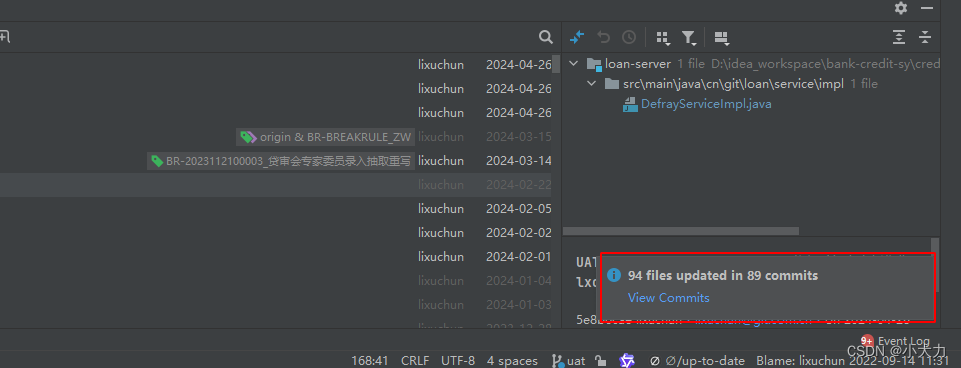
![[pwn]静态编译](https://img-blog.csdnimg.cn/img_convert/3b29f2825a5d3bd650025cb4b2c266c9.png)
